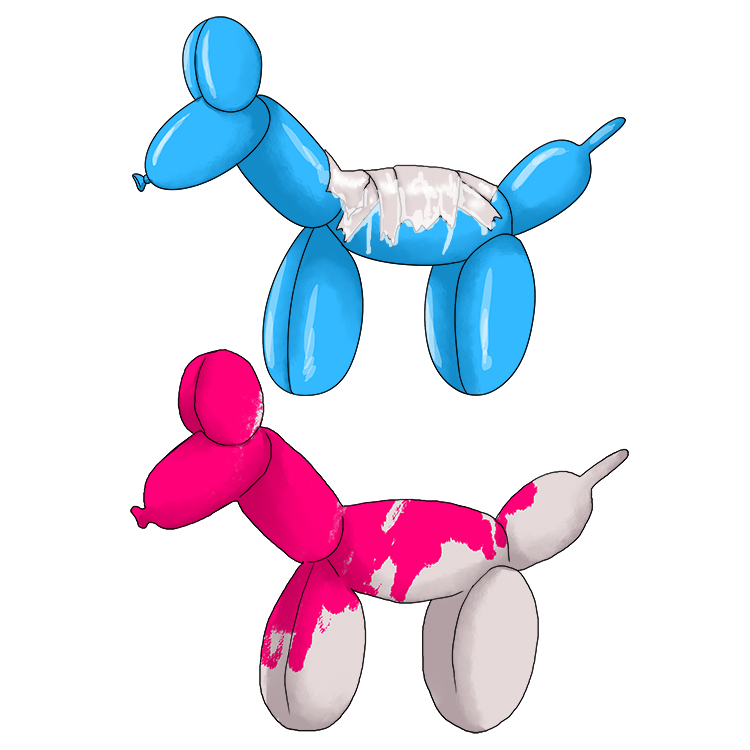Jeff Koons Art Project
Inflate a long balloon, leaving about two inches not inflated at the end. Tie off the open end.
Twist three segments at the end you tied off. The first should be about two inches long, the second and third twists should be slightly smaller.
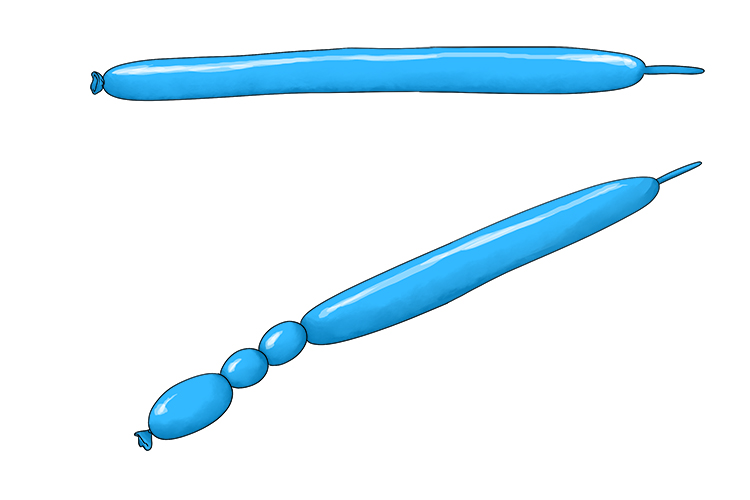
The first balloon twist will form the snout of the dog. The second and third twists will form the dog's ears.
Bring the snout segment against the main body of the balloon. Then, twist the two ear segments together while holding the snout and the main body of the balloon to create a lock twist.
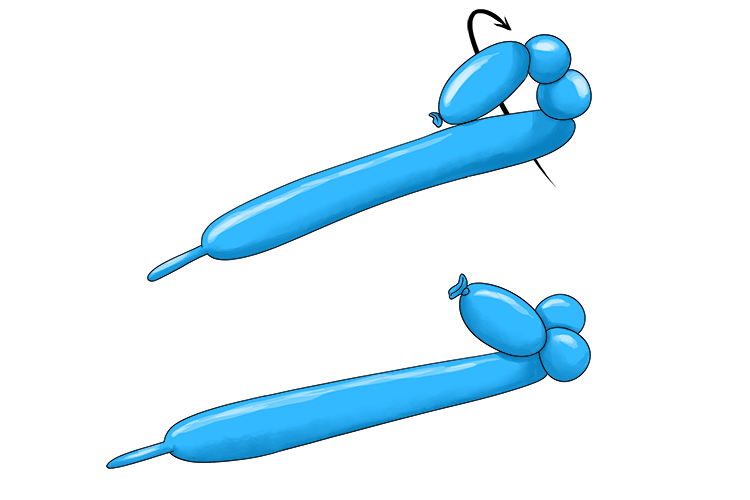
Twist three basic balloon twists below the head, each about three inches long. The first segment will form the dog's neck. The second and third segments will form the dog's front legs.
Next, as you did with the dog's head, create a lock twist by twisting the leg segments together while holding the neck against the body of the balloon.
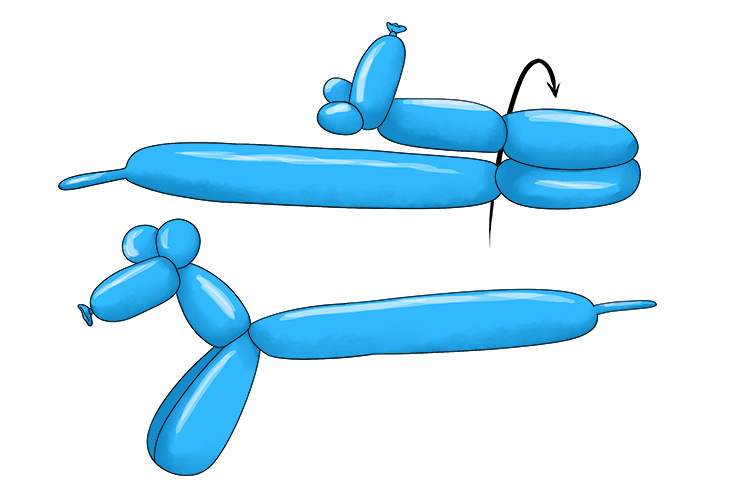
Twist three basic balloon twists below the front legs, each about three inches long. The first segment will form the dog's body. The second and third twists will form the dog's back legs. The final balloon segment will form the dog's tail.
As you did with the dog's front legs, create a lock twist by twisting the leg segments together while holding the body segment against the tail segment. Now, your balloon dog should be complete!
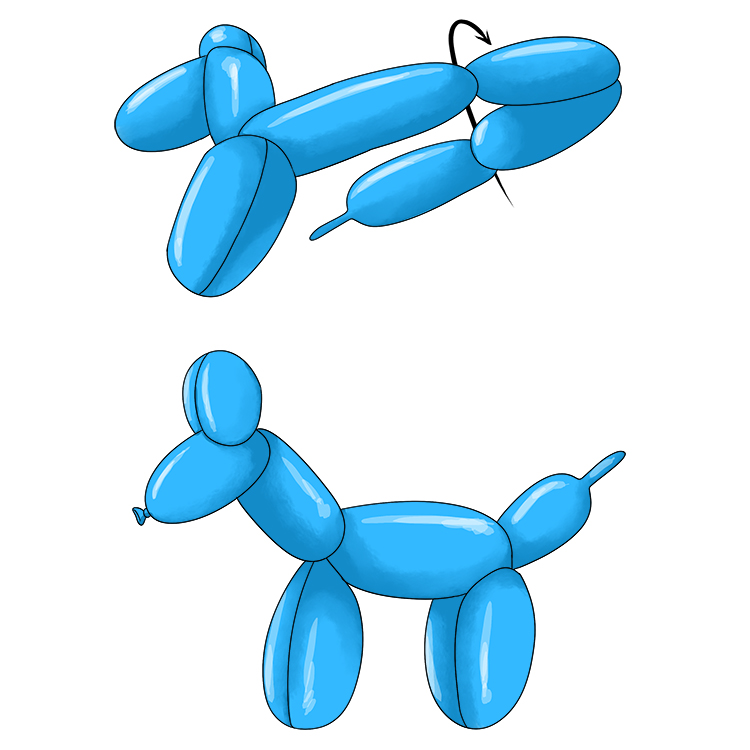
To make your balloon dog last longer, you can use PVA glue to stick layers of tissue paper or newspaper over the balloon dog. Once it dries, paint it a bright and vibrant colour!
Jeff Koons Art Project 2
Using a coloured piece of card, draw seven large ovals, a small triangle and a rectangle with rounded edges at one end.

Cut out the shapes and stick them on a piece of card in the shape of the balloon dog, using the triangle as the nose and the rounded rectangle as the end of the tail, ready to shade and highlight.
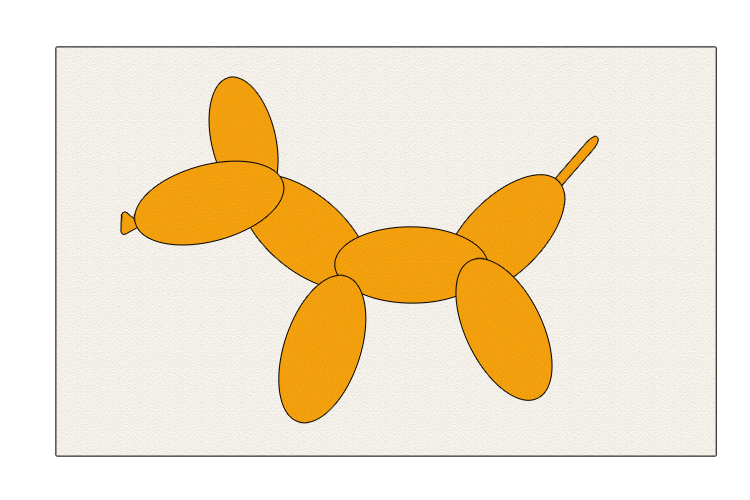
Jeff Koons's balloon animals are shiny and reflective, so when you shade and highlight the shapes, think about where the sun would reflect and where the shadows might fall and any background that might also reflect. Don't just use black and white to shade and highlight, but look at how the colours interact with each other. For example, the blue sky looks green when reflected on the yellow surface.
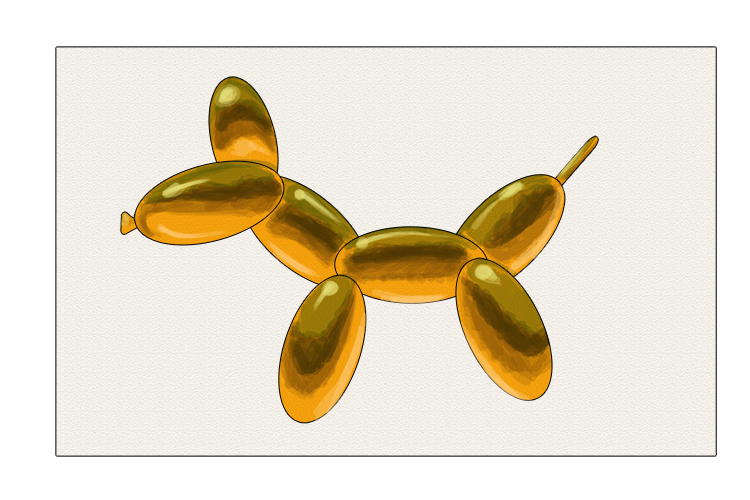
Jeff Koons.





